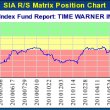What will happen to emerging market assets when the Fed inevitably begins to wind down its asset purchase program? Russ K highlights three fundamentals that mean certain EM countries – like China – could better withstand Fed tapering than others.
by Russ Koesterich, Portfolio Manager, Blackrock
After the Federal Reserve (Fed) signalled its intent to taper last May, emerging market (EM) stocks and bonds came under pressure. And though the assets have rebounded since the Fed’s surprise no-taper announcement last week, investors are still left to wonder: What will happen to emerging world investments once the Fed does begin to taper? And how might EM countries fare if such tapering prompts capital outflows?
My team and I address those exact questions in this month’s Investment Directions market outlook . We believe that when the Fed does taper, countries with certain sound fundamentals—like the three highlighted below— are likely better positioned to withstand significant capital outflows and the impact of reduced US monetary stimulus.
1. Current account surpluses: Countries with this characteristic aren’t so reliant on external funding so they may not be as impacted by a withdrawal of foreign funding.
2. Significant foreign exchange reserves: Countries with this characteristic have a buffer to keep their currencies stable if there’s an exodus of foreign capital.
3. Healthy corporate leverage: Healthy and sustainable corporate leverage, as reflected in higher interest coverage ratios, means that companies in a country can comfortably handle the interest costs of their debt. This final attribute is especially important as more emerging countries are resorting to higher local rates to try to counter capital outflow and inflation pressure from cheaper local currencies. Higher local rates, in turn, increase the interest burden on corporate earnings.
Which EM countries have many of these characteristics?
In emerging Asia, China, Korea and Taiwan have significant reserves, and have healthy levels of corporate leverage. In contrast, India, Thailand, the Philippines and Indonesia are most at risk due to their weaker current account positions and large debt servicing burdens. Elsewhere, in emerging EMEA, Russia seems more resilient than South Africa given Russia’s significant foreign exchange reserve, trade surplus and low debt servicing costs.
Among these countries, we particularly like China. The Chinese market has outperformed its EM peers quarter-to-date on the back of better-than-expected economic and improving industrials sector profit. China is also supported by its favorable balance of payments and gigantic foreign reserves relative to other EM countries.
In addition, we continue to believe that EM equities overall look cheap considering their relative growth potential and healthy corporate profits, and have the potential to outperform their developed market counterparts over the next several years.
To be sure, when tapering eventually happens, the degree of capital outflow from emerging economies will depend on the pace of Fed tapering and the expected path of rates. If tapering turns out to be extremely gentle and rates expectations remain close to zero, we may not see as much of an impact on emerging markets in general as we did this spring.
Sources: September Investment Directions, Bloomberg
Russ Koesterich, CFA, is the Chief Investment Strategist for BlackRock and iShares Chief Global Investment Strategist. He is a regular contributor to The Blog and you can find more of his posts here.
Copyright © Blackrock














